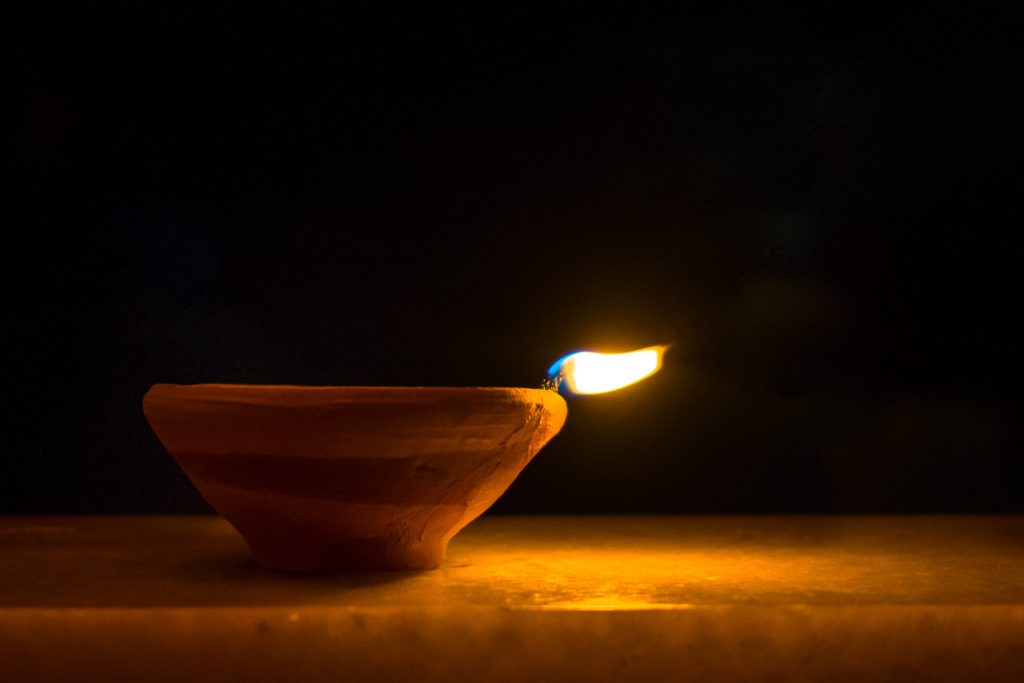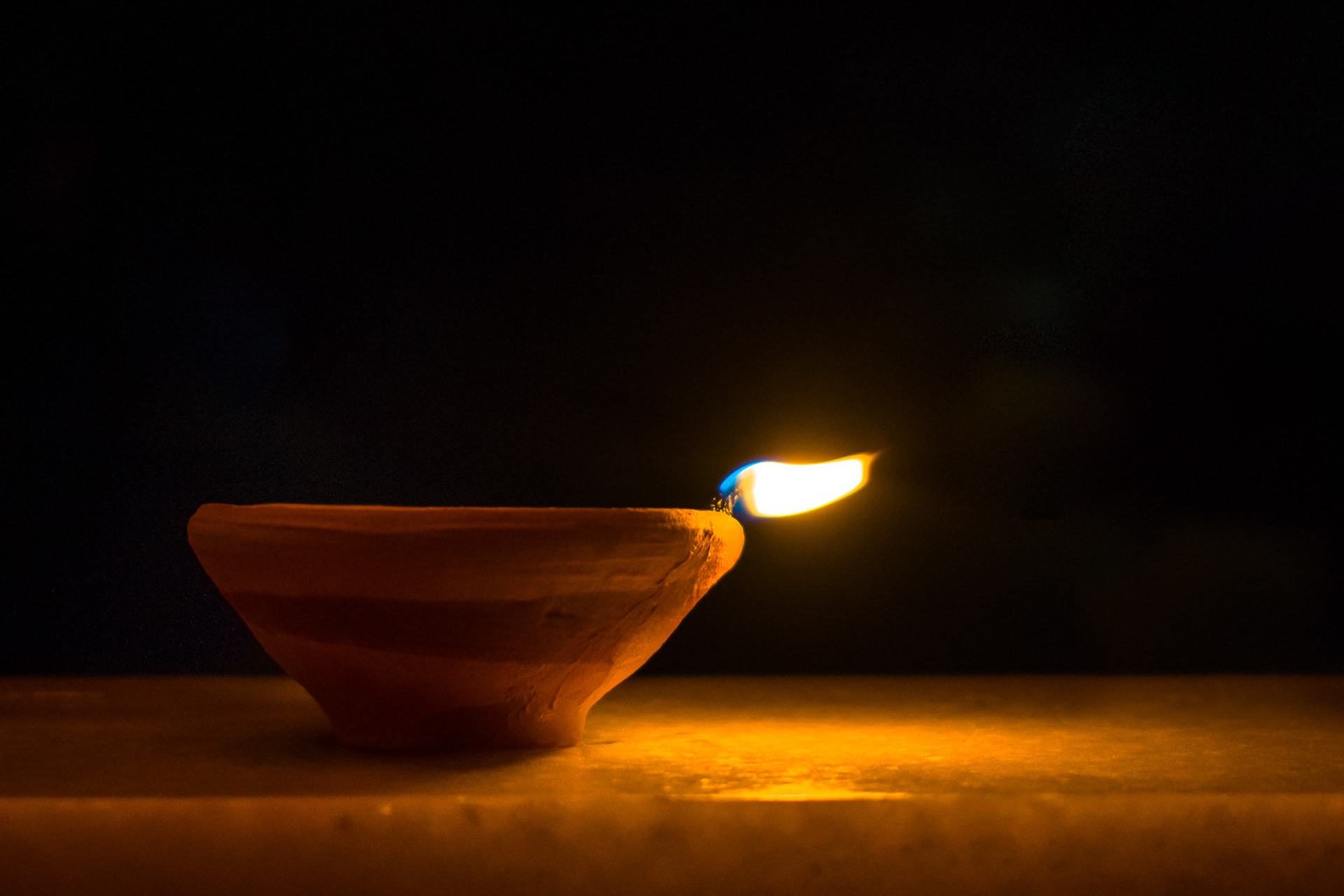Om
is the original sound from which everything was created, the essence of the whole Universe, the Absolute. It is comprised of three sounds: A-U-M, representing the past, the present and the future, and the three divine principles – Brahma, Vishnu and Shiva.

Kalash
is a pot made of copper, clay, brass or silver, filled with water, and covered with mango leaves and a coconut. It has the symbol of swastika painted on it, and a thread wrapped around its neck. The pot symbolises earth, and the water in the kalash symbolises the primeval water from which the entire creation emerged.
This water is a giver of life to all that exists, and has the potential of creating innumerable forms in the world by using the energy of the Universe. The leaves and the coconut represent the creation, and the thread is love that ties all the elements of creation together.
Swastika is a symbol of the sun, the giver of life. Swastika literally means wellbeing and prosperity.
Kalash also represents all holy rivers, the knowledge of the Vedas, and the blessings of all deities. During puja it can represent the deity to which the ceremony is dedicated.
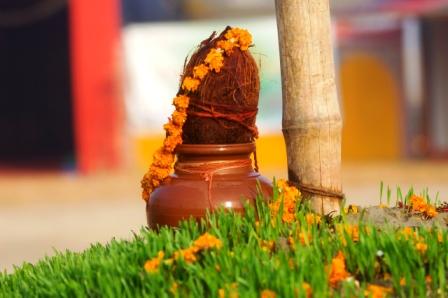
Swastika
is one of the oldest symbols of the Sun, and is derived from the Sanskrit word swasti – wellbeing, prosperity, and ka – symbol.
Its four corners should attract good luck from all the four corners of the world.

Trishul
Trident – the weapon and one of the symbols of Lord Shiva.
The three spears symbolise the three Divine shaktis (powers):
Iccha Shakti – willpower, – Kriya Shakti – the power of action,
– and Gyan Shakti – wisdom.
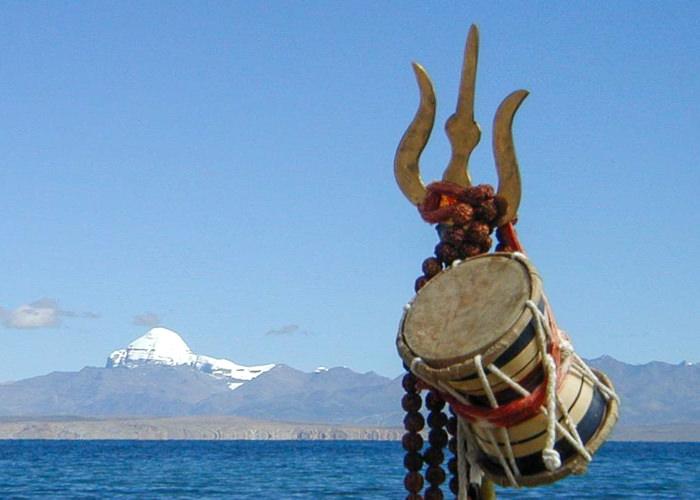
Banyan tree
Ficus Indicus, symbolises Hinduism with the branches that spread in all directions from many roots, forming together a mighty tree whose shade spreads widely.
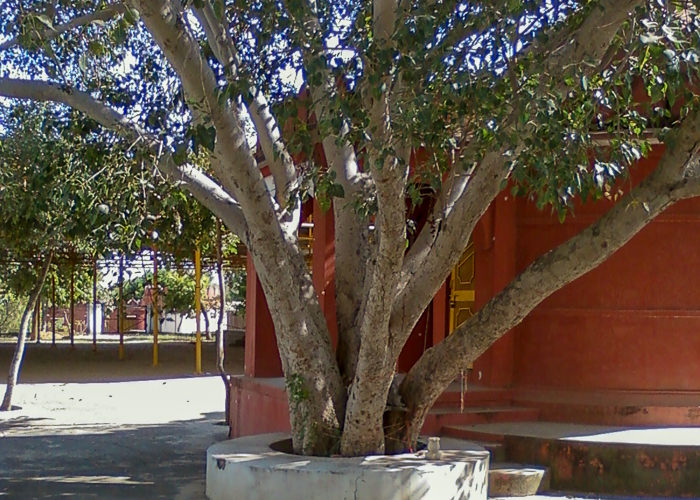
Lotos
is an important symbol for spiritual life – a metaphor of Maya – the illusion of existence. It grows from the muddy water, but its flower is always clean and above the water.
We are this lotus, that has roots in the mud at the bottom of the lake, but like the lotus, our consciousness is destined to rise above the level of blurred illusion, to clarity and freedom.
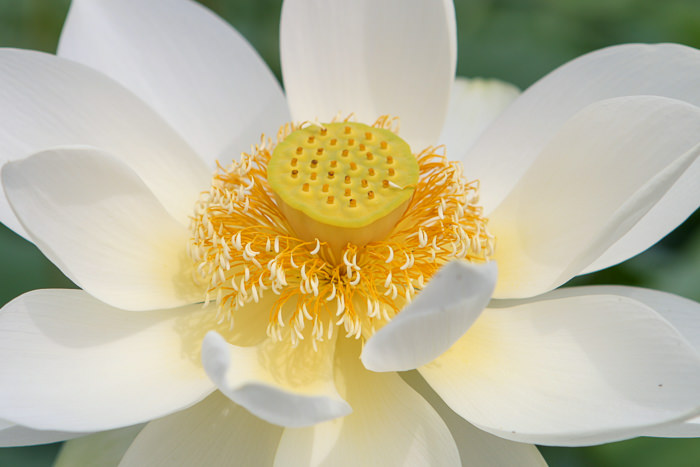
Diya
is a symbol of the Self. It is made of clay, which represents our body, and has a wick made of cotton and oil. The flame of diya is always burning upwards, and inspires us to strive towards higher ideals.
The cotton wick represents our ego. The oil or ghee in the lamp represents our vasanas – the negative tendencies. As diya burns, giving light to all, oil is consumed slowly, and at the end, the wick is also burned out. Symbolically this means that when vasanas are illuminated with spiritual knowledge (i.e. with the flame), they slowly run out, making ego dissapear as well. Only when we sacrifice ourselves for others as a lamp does, by making ourselves humble and freeing ourselves from ego, can we truly serve our society.
